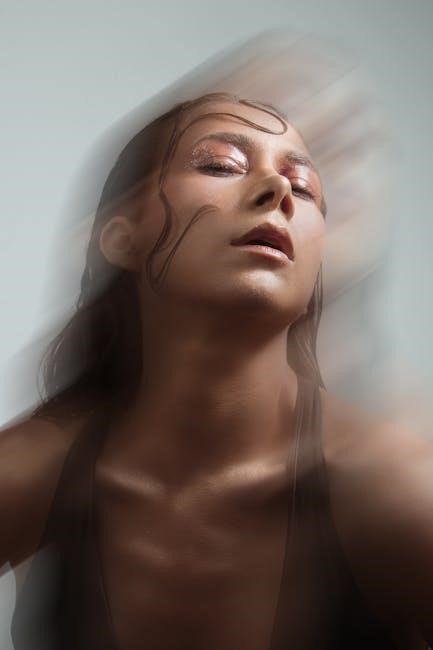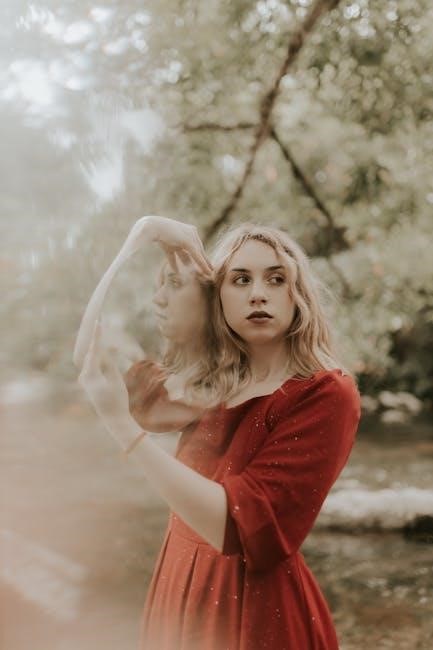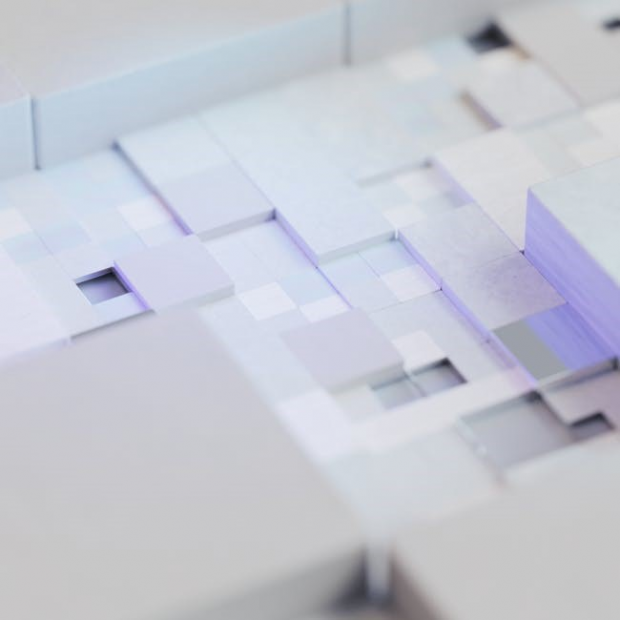Diffusion models represent a transformative approach in generative AI, offering probabilistic techniques for imaging and vision tasks. By iteratively refining noise, they enable versatile creation and manipulation of visual data, making them indispensable in modern AI systems.
1.1 What Are Diffusion Models?
Diffusion models are a class of generative models that work by gradually transforming noise into meaningful data through an iterative denoising process. These models consist of two main phases: the forward process, which progressively adds noise to data, and the reverse process, which learns to remove noise to reconstruct the original data. This approach enables versatile generation and manipulation of visual content, making diffusion models highly effective for imaging and vision tasks such as image synthesis, super-resolution, and text-to-image generation.
1.2 Historical Context and Evolution
Diffusion models trace their roots to earlier generative approaches, evolving from ideas in thermodynamics and iterative denoising. Initially explored in the 2010s, these models gained traction with the introduction of Denoising Diffusion Probabilistic Models (DDPM) in 2020, which refined the theoretical framework. Subsequent advancements, such as Stable Diffusion, demonstrated their effectiveness in high-quality image generation. This evolution highlights the transition from conceptual foundations to practical applications, solidifying diffusion models as a cornerstone of modern generative AI in imaging and vision tasks.
1.3 Key Concepts: Forward and Reverse Processes
Diffusion models operate through two core processes: the forward process and the reverse process. The forward process gradually adds noise to data, transforming it from its original form to a random noise distribution. This is typically modeled as a Markov chain, where each step corrupts the data slightly. Conversely, the reverse process learns to denoise data, reconstructing the original input by reversing the corruption steps. These probabilistic processes are central to diffusion models, enabling them to generate high-quality images and perform various vision tasks effectively.

Theoretical Foundations
Diffusion models are rooted in probabilistic principles, involving iterative denoising processes guided by neural networks. They mathematically define forward and reverse processes, enabling efficient image generation.
2.1 Denoising Diffusion Probabilistic Models (DDPM)
Denoising Diffusion Probabilistic Models (DDPM) are a cornerstone of modern generative AI. They operate by gradually corrupting training data through a forward diffusion process and then learning to reverse this corruption. This process involves a series of steps where noise is added to the data, and a neural network is trained to predict and remove it. The model is typically trained using a weighted reconstruction loss, encouraging accurate denoising across all noise levels. DDPM’s iterative refinement process makes it highly effective for generating high-quality images and other visual content, establishing it as a key technique in vision tasks. Its theoretical foundations have inspired numerous extensions and applications in imaging and vision.
2.2 Loss Functions and Training Objectives
The training of diffusion models relies on carefully designed loss functions to guide the learning process. A common approach is to use a weighted reconstruction loss, which measures the difference between the predicted and actual noise during the denoising process. Additionally, a KL divergence term is often incorporated to ensure the reverse process aligns with the forward diffusion. The training objective is to minimize these losses while maintaining stable sampling. Techniques like noise scheduling and beta annealing are employed to balance reconstruction quality and sampling diversity, ensuring the model learns to generate high-quality images effectively.
2.3 Types of Diffusion Models: DDPM vs. DDIM
Denoising Diffusion Probabilistic Models (DDPM) and Denoising Diffusion Implicit Models (DDIM) are two prominent variants. DDPM learns the reverse diffusion process using a probabilistic approach, while DDIM simplifies this by removing the stochasticity, enabling faster sampling. DDPM typically uses a learned noise prediction network and a temperature parameter for sampling, whereas DDIM employs a non-Markovian reverse process. Both models excel in image generation tasks, but DDIM often achieves better computational efficiency and sampling speed, making it a preferred choice for practical applications in imaging and vision.

Architecture of Diffusion Models
Diffusion models rely on architectures like UNet or Transformer-based designs, optimized for vision tasks. These models efficiently process visual data, enabling high-quality image generation and manipulation through iterative refinement.
3.1 UNet Architecture for Diffusion Models
The UNet architecture is a cornerstone of modern diffusion models, particularly in vision tasks. Its symmetric encoder-decoder structure, paired with skip connections, enables efficient denoising processes; Originally designed for image-to-image translation, UNet’s adaptability shines in diffusion models, where it learns to gradually refine noisy inputs into coherent visuals. The model’s effectiveness lies in its ability to capture multi-scale features, making it ideal for high-quality image generation. Recent implementations, such as those in Keras examples, demonstrate its practical application in denoising diffusion pipelines, solidifying its importance in the field.
3.2 Transformer-Based Diffusion Models
Transformer-based diffusion models leverage the powerful self-attention mechanisms of transformers to enhance image generation and manipulation. By capturing global dependencies, transformers enable models to better understand complex visual patterns. This architecture is particularly effective for high-resolution imaging tasks, where detailed context is crucial. Recent advancements, such as Vision Transformers (ViT), have demonstrated impressive results in vision tasks, making them a popular choice for diffusion models. The integration of transformers into diffusion pipelines has revolutionized the field, offering improved efficiency and quality in generating and refining visual content.
3.3 Efficient Architectures for Vision Tasks
Efficient architectures for vision tasks in diffusion models focus on reducing computational demands while maintaining high-quality outputs. Techniques such as downsampling, lightweight neural networks, and conditional mechanisms optimize performance. These designs enable scalable solutions for tasks like super-resolution and image segmentation. By streamlining the diffusion process, these architectures ensure faster training and inference times, making them suitable for real-world applications where computational resources are limited.
Training Diffusion Models
Training diffusion models involves using large datasets and advanced optimizers to ensure stable learning. Various strategies enhance scalability and efficiency, making them suitable for real-world applications.
4.1 Datasets for Training Vision Diffusion Models
Large-scale, diverse datasets are crucial for training vision diffusion models. Commonly used datasets include ImageNet, COCO, and LSUN, which provide rich visual content for learning. These datasets are essential for teaching models to understand and generate realistic images. Specialized datasets for tasks like super-resolution or medical imaging are also employed to adapt diffusion models to specific domains. The choice of dataset significantly impacts the model’s ability to generalize and produce high-quality results.
4.2 Optimizers and Training Strategies
Training diffusion models requires careful selection of optimizers and strategies. The Adam optimizer is commonly used, often with learning rates between 0.001 and 0.0001. Learning rate schedules, such as cosine annealing, help stabilize training. Techniques like gradient clipping prevent exploding gradients, while mixed-precision training enhances computational efficiency. These strategies ensure model convergence and improve sample quality. Proper optimization is critical for effectively training diffusion models, enabling them to generate high-quality images and perform complex vision tasks efficiently.
4.3 Ensuring Training Stability
Training stability in diffusion models is achieved through careful noise scheduling and gradient management. Techniques like gradient clipping and weight normalization help prevent instability. Learning rate scheduling, such as linear warmup, ensures smooth optimization. Additionally, proper initialization and regularization methods maintain training balance. These strategies collectively enhance model convergence and sample quality, making training more reliable and efficient.

Applications in Imaging and Vision
Diffusion models excel in imaging tasks like generation, reconstruction, and enhancement, offering versatile solutions for creating, restoring, and improving visual content with remarkable quality and precision.
5.1 Image Generation and Synthesis
Diffusion models have revolutionized image generation and synthesis by enabling the creation of high-quality, diverse visuals through iterative refinement processes. These models gradually denoise random noise to produce realistic images, offering unparalleled control over the output. Their versatility allows for generating images in various styles and domains, from natural landscapes to artistic compositions. The ability to condition generation on specific prompts or inputs further enhances their utility in tailored image synthesis. This capability has made diffusion models indispensable in creative industries, research, and applications requiring custom visual content generation.
5.2 Image Inversion and Reconstruction
Diffusion models facilitate image inversion and reconstruction by reversing the noise addition process. This involves mapping an image to its latent space and reconstructing it by iteratively denoising. The process leverages the model’s learned reverse diffusion steps, enabling accurate reconstruction of original or modified images. This technique is particularly useful for image editing, enhancement, and understanding the model’s internal representations. Tools like Stable Diffusion models and resources such as the Keras example provide practical implementations for these tasks, making them accessible for various applications in imaging and vision.
5.3 Super-Resolution Imaging
Diffusion models excel in super-resolution imaging by enhancing low-resolution images into high-quality versions. The process involves training models to predict missing details and reduce noise through iterative denoising steps. This technique leverages the model’s ability to learn complex patterns and textures, enabling realistic upscaling. Applications include medical imaging, satellite visuals, and video enhancement. Resources like Stable Diffusion models and tutorials from Keras provide practical guidance for implementing these tasks, demonstrating the power of diffusion models in restoring and improving image resolution effectively.
5.4 Image Segmentation and Object Detection
Diffusion models are increasingly applied to image segmentation and object detection tasks, leveraging their ability to learn complex visual patterns. By training on labeled datasets, these models can predict segmentation masks or detect objects by refining noisy inputs. Conditional diffusion models excel in such tasks, guided by prompts or labels. Applications span medical imaging, autonomous systems, and surveillance. Tutorials and resources, like those from Keras, provide practical insights into implementing these models for precise and efficient vision tasks, enhancing accuracy and reliability in real-world scenarios.
5;5 Text-to-Image Synthesis
Diffusion models have revolutionized text-to-image synthesis by enabling high-quality image generation from textual descriptions. These models, often integrated with vision-language frameworks, learn to map text prompts to visual representations through conditional generation. Recent advancements, such as InstructCV, demonstrate how diffusion models can perform various vision tasks guided by text instructions. Tutorials and resources highlight the importance of fine-tuning models on diverse datasets to ensure coherence between text and image. Applications range from artistic creation to advertising, showcasing the models’ flexibility and creativity. Evaluations using metrics like HEMM emphasize their effectiveness in capturing textual-visual alignment, making them indispensable for modern generative tasks.

Evaluation of Diffusion Models
Evaluation of diffusion models involves assessing their ability to generate high-quality, diverse, and consistent outputs. Metrics like HEMM provide systematic ways to measure their performance across tasks.
6.1 Metrics for Image Quality and Diversity
Evaluating diffusion models involves metrics like Inception Score (IS) and Fréchet Inception Distance (FID) to assess image quality and diversity. IS measures realism and variety, while FID compares generated images to real data distributions. The Holistic Evaluation of Multimodal Models (HEMM) framework systematically evaluates capabilities across tasks. Human evaluation complements these metrics, providing qualitative insights into image aesthetics and relevance, especially in text-to-image synthesis. These approaches ensure comprehensive assessment of diffusion models’ performance in imaging and vision applications.
6.2 Human Evaluation and Perceptual Studies
Human evaluation plays a crucial role in assessing the perceptual quality of images generated by diffusion models. Studies focus on how well models resolve visual ambiguities and interpret complex cues, such as visual puns. Perceptual experiments often involve comparing generated images to real-world examples, evaluating aspects like realism, coherence, and aesthetic appeal. These studies complement quantitative metrics, offering insights into human preferences and the models’ ability to capture nuanced visual semantics. This approach is particularly valuable for text-to-image synthesis and understanding real-world applicability.

Modes of Operation
Diffusion models operate in latent space, direct image space, or conditional setups. These modes enable versatile generation, from unconditional sampling to guided synthesis, enhancing creativity and control.
7.1 Latent Space Diffusion Models
Latent space diffusion models operate by compressing images into a lower-dimensional latent space, enabling efficient training and sampling. This approach reduces computational demands while maintaining quality. The process involves encoding images into latent representations, gradually adding noise, and training a model to reverse this process. Popular models like Stable Diffusion leverage this method, achieving impressive results in image generation. By separating the forward and reverse diffusion processes in latent space, these models excel at generating high-quality visuals with reduced resource requirements, making them highly scalable for various imaging tasks.
7.2 Direct Image Space Diffusion Models
Direct image space diffusion models operate entirely in the pixel domain, eliminating the need for compression or encoding into a latent space. This approach allows for finer control over image generation, enabling high-fidelity outputs. However, it often requires larger models and more computational resources due to the higher dimensionality of pixel-space data. Recent advancements have focused on improving efficiency while maintaining quality. These models are particularly suitable for tasks requiring precise manipulation of visual details, though they can face challenges with scalability compared to latent space methods.
7.3 Conditional vs. Unconditional Generation
Diffusion models can be categorized into conditional and unconditional approaches. Conditional generation uses specific prompts or conditions to guide the output, enabling precise control over the generated content, such as text-to-image synthesis. Unconditional models generate images without explicit guidance, relying on the learned data distribution. Conditional models are particularly useful for tasks requiring structured outputs, while unconditional models excel in exploring diverse possibilities. Recent advancements have integrated both paradigms, allowing flexible generation based on task requirements. This duality enhances the versatility of diffusion models in imaging and vision applications.

Advanced Topics in Diffusion Models
Advanced diffusion models explore cutting-edge techniques like vision-language integration and multimodal generation, enabling sophisticated applications beyond traditional imaging, such as text-guided synthesis and cross-domain generation.
8.1 Prompt-Free Diffusion Models
Prompt-free diffusion models eliminate the need for textual prompts, enabling generation directly from visual cues or latent space patterns. This approach enhances flexibility and spontaneity in creative tasks, reducing reliance on textual guidance. By leveraging inherent data distributions, these models can produce diverse outputs without explicit conditioning, making them suitable for autonomous artistic exploration. They also address challenges like textual ambiguity and cultural bias, offering a more intuitive interface for users. This advancement opens new possibilities for real-time generation and interactive applications, pushing the boundaries of generative AI in vision tasks.
8.2 Vision-Language Models (VLMs)
Vision-Language Models (VLMs) integrate visual and textual data, enabling models to understand and generate content across both domains. By aligning visual and linguistic representations, VLMs can perform tasks like text-to-image synthesis, visual question answering, and image captioning. These models extend diffusion frameworks by incorporating textual guidance, enhancing their ability to generate contextually relevant images. VLMs also address challenges like textual ambiguity by leveraging visual cues, as seen in studies using visual puns. This multimodal approach advances applications in computer vision, making models more versatile and capable of handling complex, real-world tasks effectively.
8.3 Multimodal Diffusion Models
Multimodal diffusion models extend traditional diffusion frameworks by incorporating multiple data types, such as text, images, and audio. These models enable joint generation and manipulation of diverse data formats, enhancing creativity and versatility in AI systems. By aligning different modalities during the diffusion process, they can generate coherent and contextually relevant outputs across domains. This approach is particularly valuable for tasks requiring cross-modal understanding, such as image generation from textual descriptions or audio-visual synthesis. Multimodal diffusion models represent a significant advancement in generative AI, offering new possibilities for complex, real-world applications.

Challenges and Limitations
Diffusion models face challenges such as mode collapse, computational inefficiency, and ethical concerns like bias in generated content, requiring careful mitigation strategies.
9.1 Mode Collapse and Sampling Quality
Mode collapse remains a significant challenge, where diffusion models generate limited variations of outputs, failing to capture the full data distribution. This reduces diversity in generated images. Additionally, sampling quality can suffer due to inefficient noise prediction, leading to blurry or unrealistic results. Addressing these issues requires careful tuning of the diffusion process, loss functions, and sampling strategies. Advanced methods like conditional generation and improved denoising networks aim to mitigate these limitations, enhancing both the quality and diversity of outputs in imaging and vision tasks.
9.2 Computational Efficiency and Scalability
Diffusion models often face challenges in computational efficiency due to the iterative nature of the denoising process. Training these models requires significant memory and processing power, particularly for high-resolution images. Scalability becomes a concern when extending to large datasets or complex architectures. Recent advancements, such as optimized sampling methods and efficient network architectures, aim to reduce computational overhead. Techniques like knowledge distillation and quantization are also being explored to make diffusion models more accessible for real-world applications while maintaining their generative capabilities.
9.3 Ethical Considerations and Biases
Diffusion models raise significant ethical concerns, particularly regarding biases in generated content. These models can perpetuate stereotypes and inequalities present in training data, leading to unfair representations. Privacy issues arise when models generate images of individuals without consent. Additionally, the potential for misuse, such as creating deepfakes or harmful content, highlights the need for ethical guidelines. Addressing these challenges requires careful curation of training data, implementation of fairness metrics, and robust safeguards to mitigate misuse, ensuring responsible deployment of diffusion models in real-world applications.

Future Directions
Future research focuses on enhancing diffusion models’ efficiency, scalability, and multimodal capabilities, ensuring ethical deployment in real-world imaging and vision applications.
10.1 Improving Sampling Efficiency
Improving sampling efficiency in diffusion models is crucial for real-world applications. Researchers are exploring faster denoising processes and conditional generation methods to reduce computational costs while maintaining high-quality outputs.
Advanced architectures and training strategies aim to accelerate convergence, enabling models to generate precise images with fewer steps. These innovations are key to making diffusion models more accessible and scalable for diverse imaging tasks.
10.2 Enhancing Multimodal Capabilities
Enhancing multimodal capabilities in diffusion models involves integrating text, vision, and other data types seamlessly. Recent advancements focus on combining language models with diffusion processes to enable text-guided image generation and joint vision-language tasks.
By aligning textual and visual representations, these models can better understand and generate diverse, context-aware outputs. This integration opens new possibilities for applications like text-to-image synthesis and multimodal storytelling, pushing the boundaries of generative AI.
10.3 Real-World Applications and Deployment
Diffusion models are being deployed across industries for diverse applications, from artistic image generation to medical imaging. Their ability to handle text-to-image synthesis and vision-language tasks makes them invaluable in advertising, design, and robotics. Models like InstructCV guide image generation with textual instructions, enabling precise control. Additionally, these models are used for processing multiple images in tasks like script generation. Deployment often utilizes pre-trained checkpoints, such as Stable Diffusion, for generating specific image styles. Efforts focus on enhancing scalability and efficiency to meet real-world demands. These advancements are making diffusion models integral to various practical applications.
Diffusion models have revolutionized imaging and vision tasks, offering powerful tools for generative AI. Their versatility in tasks like image synthesis, super-resolution, and text-to-image generation underscores their transformative potential. As highlighted in tutorials and research, these models leverage iterative denoising processes to achieve high-quality results. With advancements in architectures and training strategies, diffusion models are becoming more efficient and scalable. Their integration with vision-language models further expands their applications. As the field evolves, understanding diffusion models remains crucial for harnessing their capabilities in both creative and practical domains, driving innovation across industries.

Additional Resources
Explore recommended papers, open-source implementations, and active communities for deeper insights into diffusion models and their applications in imaging and vision.
12;1 Recommended Papers and Tutorials
Key papers include works on Vision-Language Models (VLMs) and the Holistic Evaluation of Multimodal Models (HEMM) framework. Tutorials like the Keras example on DDIM provide practical insights into implementing diffusion models. The survey on denoising diffusion models in vision offers a comprehensive review of theoretical and practical applications. Additionally, resources like the Hugging Face Diffusers tutorial and the curated list of foundational models are essential for hands-on learning. These materials cater to both beginners and advanced researchers, ensuring a well-rounded understanding of diffusion models in imaging and vision tasks.
12.2 Open-Source Implementations
Popular open-source implementations include Hugging Face Diffusers, which provides pre-trained models and pipelines for various diffusion-based tasks. The Keras example on DDIM offers a practical starting point for denoising diffusion models. Stable Diffusion checkpoints, such as those from CompVis, enable text-to-image synthesis with pre-trained weights. These resources are widely adopted, allowing researchers and practitioners to experiment and adapt diffusion models for imaging and vision applications efficiently. They are well-documented and community-supported, making them ideal for both educational and production use cases.
12.3 Communities and Forums
The diffusion models community is rapidly growing, with active forums and discussion groups on platforms like GitHub, Reddit, and specialized AI communities. Hugging Face Spaces hosts demos and discussions, while platforms like Kaggle and Stack Overflow provide practical support. Researchers and developers share insights, tutorials, and implementations, fostering collaboration. These communities offer invaluable resources for learning, troubleshooting, and staying updated on the latest advancements in diffusion models for imaging and vision tasks. Engaging with these forums is essential for both newcomers and experts seeking to optimize their workflows and explore innovative applications.
